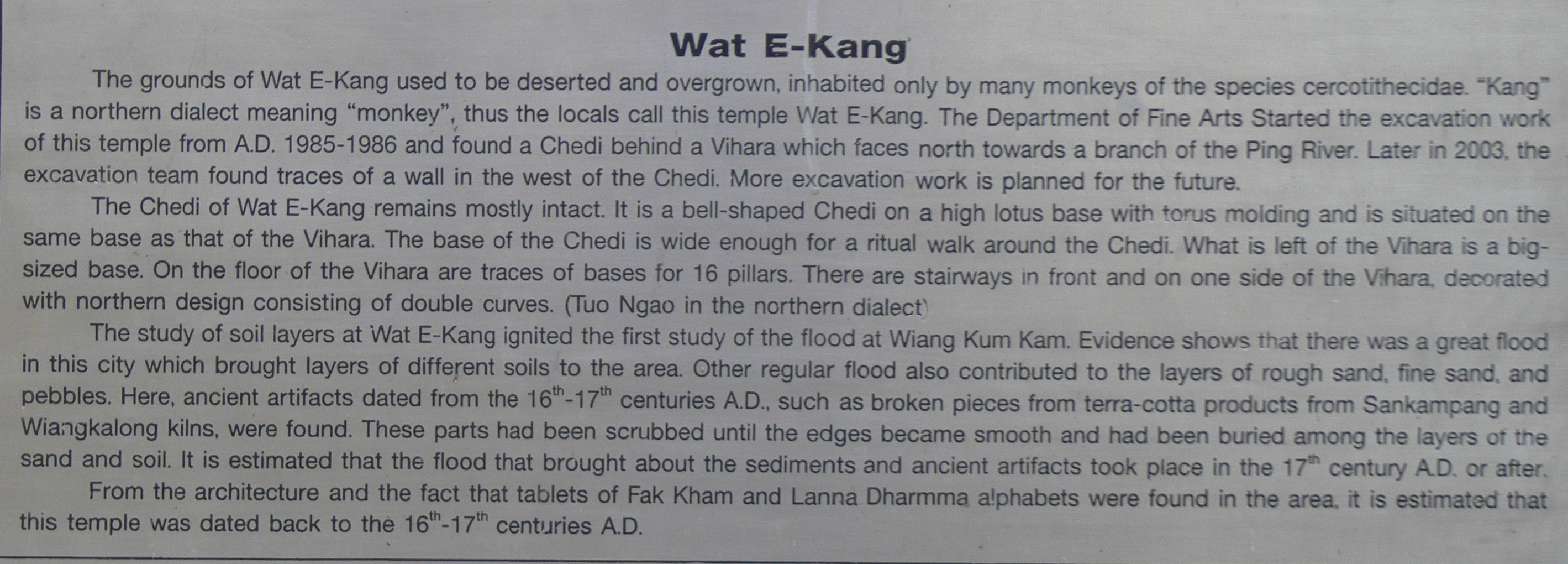Wat I Khang on:
[Wikipedia]
[Google]
[Amazon]

 Wat I Khang ( th, วัดอีค่าง, ; ) is a ruined 16th or 17th century temple in the
Wat I Khang ( th, วัดอีค่าง, ; ) is a ruined 16th or 17th century temple in the 

 Wat I Khang ( th, วัดอีค่าง, ; ) is a ruined 16th or 17th century temple in the
Wat I Khang ( th, วัดอีค่าง, ; ) is a ruined 16th or 17th century temple in the Wiang Kum Kam
Wiang Kum Kam ( th, เวียงกุมกาม; nod, ᩅ᩠ᨿᨦᨠᩩᨾᨠᩣ᩠ᨾ) is an historic settlement and archaeological site along the Ping River, which was built by King Mangrai the Great as his capital before he moved it to C ...
archaeological complex near modern Chiang Mai
Chiang Mai (, from th, เชียงใหม่ , nod, , เจียงใหม่ ), sometimes written as Chiengmai or Chiangmai, is the largest city in northern Thailand, the capital of Chiang Mai province and the second largest city in ...
in northern Thailand
Thailand ( ), historically known as Siam () and officially the Kingdom of Thailand, is a country in Southeast Asia, located at the centre of the Indochinese Peninsula, spanning , with a population of almost 70 million. The country is bo ...
.
It is named after the former prevalence of wild old world monkeys
Old World monkey is the common English name for a family of primates known taxonomically as the Cercopithecidae (). Twenty-four genera and 138 species are recognized, making it the largest primate family. Old World monkey genera include baboons ...
at the site prior to its excavation and restoration, which are known as ''khang'' in Thai.
Excavations between 1985 and 1986 uncovered a '' chedi'' behind a north-facing '' vihara'' oriented toward the Ping River
The Ping River ( th, แม่น้ำปิง, , ), along with the Nan River, is one of the two main tributaries of the Chao Phraya River. It originates at Doi Thuai in the Daen Lao Range, in Chiang Dao district, Chiang Mai province. After pas ...
. In 2003, further excavations discovered traces of a wall at the west of the site. Further excavations are planned.
The primary architectural feature of the ruins is the large, mostly intact bell-shaped ''chedi'' on a high lotus-shaped base with torus molding. The base of the ''vihara'' is also preserved, including foundation stones for 16 pillars.
The site was the first to prompt studies of ancient flooding in the area, a large scale instance of which is presumed to have occurred in the 17th century.

References
* Oliver Hargreave: ''Exploring Chiang Mai, City, Valley & Mountains''. Within Books, 4th Edition, 2013. I Khang 17th century in Chiang Mai {{Thailand-struct-stub